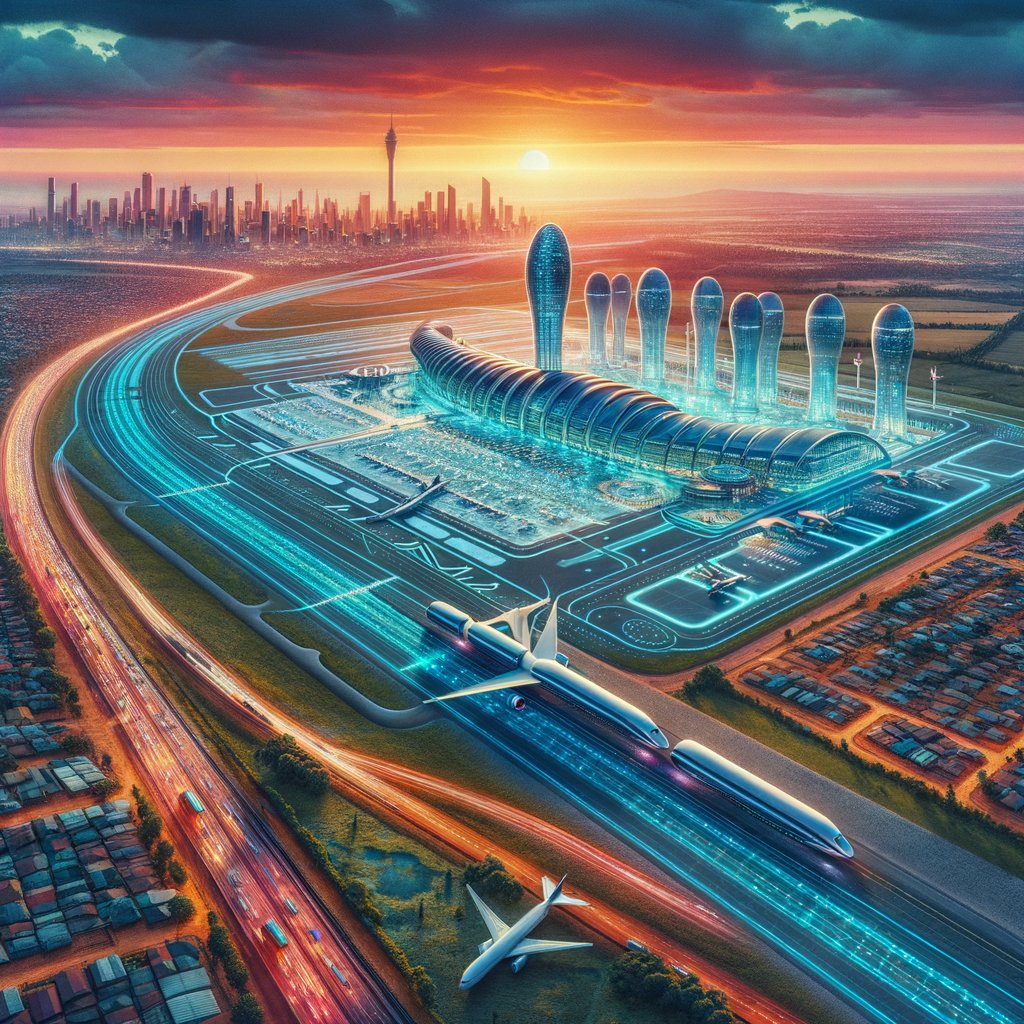Image created by AI
Skepticism Surrounds Gauteng’s Proposed R200bn Vaal Aerotropolis
Last week's buzz around the potential development of a R200 billion airport in the Sedibeng area near Vaal created waves and skepticism in equal measure. Gauteng's MEC of Finance and Economic Development, Lebogang Maile, failed to mention the ambitious project in his Medium-Term Budget Policy Statement. Instead, the proposal came up in subsequent interviews where Maile highlighted potential private-sector investments ranging from R20bn to R200bn, aiming to transform the area into a hub for South Africa’s hydrogen economy.
However, the viability and necessity of such a project are under intense scrutiny. The projected costs are staggering when compared to other recent airport constructions, such as King Shaka International which was built for R6.8 billion between 2007 and 2009 — adjusted for inflation, approximately R17 billion today. The planned expansion for OR Tambo International Airport is estimated at R21 billion, further questioning the R200 billion figure slated for the Vaal Aerotropolis which would include a massive passenger and cargo terminal.
Critically, Gauteng currently houses several underutilized airports including Lanseria, and the proposed site in Sedibeng, home to barely one million inhabitants, doesn't align with the scale intended for the new airport. This raises valid concerns about the target passenger and cargo volumes the Aerotropolis aims to attract, especially with the locality’s modest population size.
The driving force behind this proposition is MTP Aviation Solutions, led by Petko Atanassov, known for his involvement with Dube TradePort. The project, ostensibly moving forward in phases, secured R1.4 billion in 'seed capital’ from Citibank, but the grand vision touted by government officials and the underlying financial commitments invoke skepticism.
Financial impracticality aside, the strategic necessity of another major airport in the region is questionable. The development of an aerotropolis in Ekurhuleni alongside the expansion at OR Tambo seems redundant, particularly when considering the transportation of hydrogen, which does not require air freight services. Furthermore, the provincial government has other pressing infrastructure needs, notably a planned R120 billion expansion of the Gautrain network.
The employment of full-time staff and consultants on the project, funded by financial pledges and potentially government subsidies, despite the unclear roadmap and justifications, is also a concern. This suggests a worrying trend of expending substantial financial resources on potentially impracticable projects, while other vital economic areas might be neglected.
With Gauteng’s resources stretched thin across various large-scale infrastructural projects, the proposed Vaal Aerotropolis appears to be more of a fantastical ambition rather than a necessary or practical development. The region, and indeed the country, might be better served by focusing on more immediate and tangible improvements to existing infrastructure and economic zones capable of driving real growth and development in the short term.










